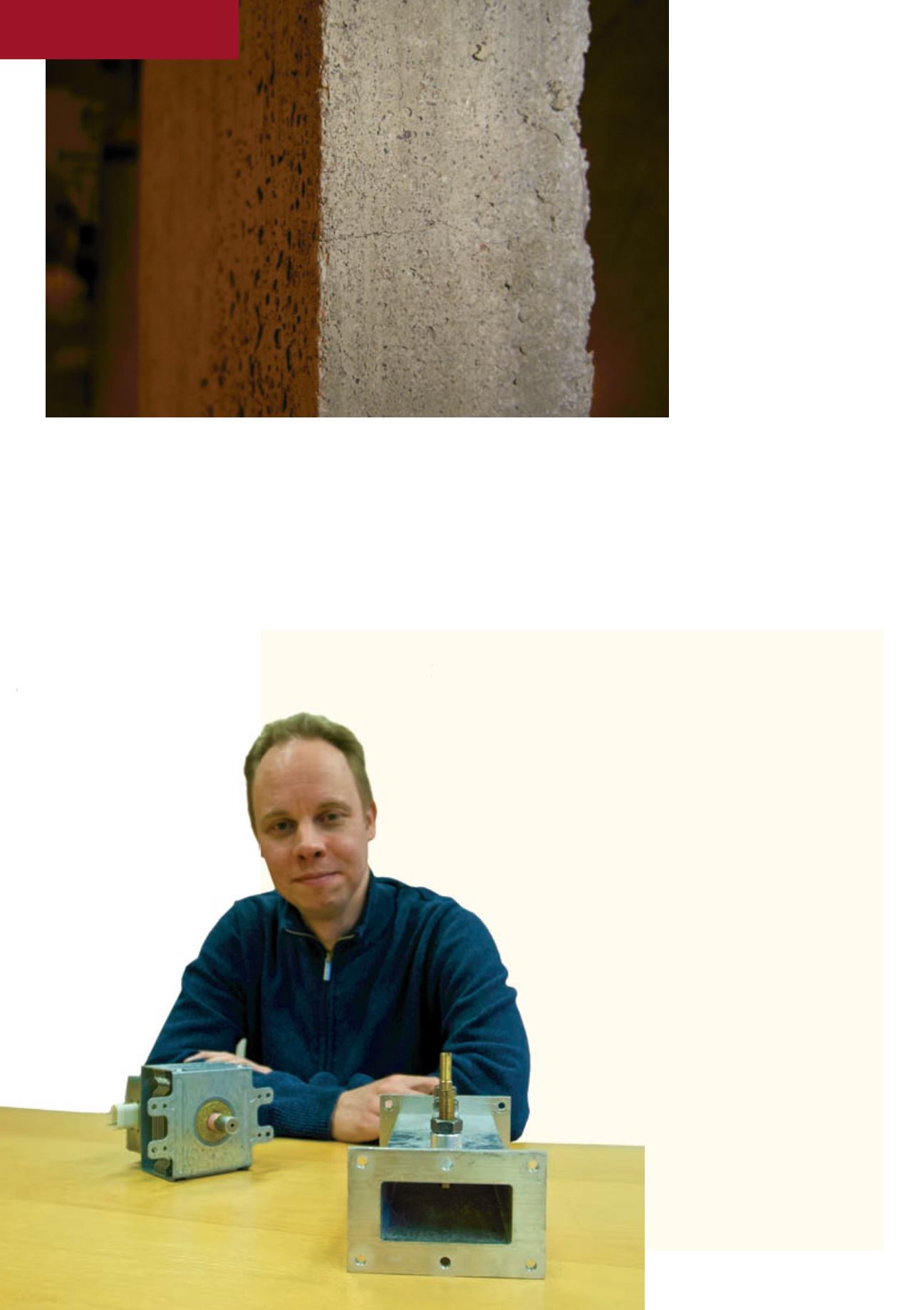
University Lecturer,
Dr Techn Saku
Suuriniemi
It is already some time since you carried out this research. Were there any
other actions taken?
Yes, there was another master’s thesis on this subject.
Has there been further research on this in other universities after your
study?
No, I am not aware of other research on this subject.
Have there been technical developments that could change
the situation? Would the results be different if the tests
were repeated today?
No. The biggest issue was control of the reflection of the
waves. This reflection is a law of nature and we know the
behaviour of waves. There are no new means to control
those in job-site conditions.
Do you think this could change in future? Could
there be technology that makes this approach
possible in practice?
At this moment I do not believe so. I think there would
have to be a new, different basic principle. We should
see the situation from the target’s
point of view. For example, if we
could create tension in the concrete
just around the reinforcement
bar, it would effectively break that
connection and the concrete would
lose its strength.
deep in the material, with surface
wetting alone being insufficient.
Another challenge was that high
moisture levels causes a high
power density on the surface.
When the material is dry, the
radiation penetrates deeper but
the power density is lower.
IN ACTION
Microwaves move in principle
like waves on water. We know
how waves reflect in a swimming
pool when conditions are
suitable, and microwaves can
also be reflected, depending
on the material. The problem
here is that a magnetron can
be damaged by such reflected
radiation, even though it had
just emitted that very radiation.
Steel causes a much stronger
reflection than concrete.
In suitable circumstances,
reinforcement bars may carry
the waves further and when the
power level is sufficiently high,
there may be sparking around
the steel.
Not all concrete is the
same. Cement may be
similar, but the sand
and gravel used can
consist of different
minerals and this
can change the
behaviour of
the microwave radiation on the
surface of the concrete.
How the radiation is absorbed
in the object depends on a
number of factors, with the
presence of rebar being one of
the most important ones. The
above mentioned type of concrete
is another. The positioning of
the magnetron in relation to the
object block is also important,
especially the distance between
the block and the magnetron and
the direction of the radiation.
In jobsite conditions it is hard
to get perfect positioning. If
safety issues are in control, there
still is the reduced efficiency.
This creates an issue with power.
We want high temperature in a
small area, this means we have to
bring more power in the material
A thinner
concrete
slab with
a clean
fracture and
hot (thus
dry) areas
Author Dr Saku Suuriniemi with some of
the equipment used during thr trials
than what leaks out. The target is
massive and the required power
is high. Poor efficiency makes the
power requirement even higher.
To make the situation even
more complicated, the heat
vapourises the moisture and this
makes the heated area expand
faster.
The test proved clearly that
concrete strength was reduced
after microwaving and visible
cracks were also created. The
calculations were correct and
the theory was proven correct.
The disappointment was that
the reaction in concrete was
slow. Heat should be generated
faster. From the test results it
was estimated that in job site
conditions, the power would
have to be in the order of
hundreds of kilowatts and that
naturally there would be practical
difficulties encountered as a
result. For example, radars can
handle that power but there the
circumstances are very different.
The final conclusion of the study
was that the theory works as
predicted but a practical solution
is too inefficient.
■
10
NOVEMBER-DECEMBER 2013
d
&
ri
NEWS REPORT


